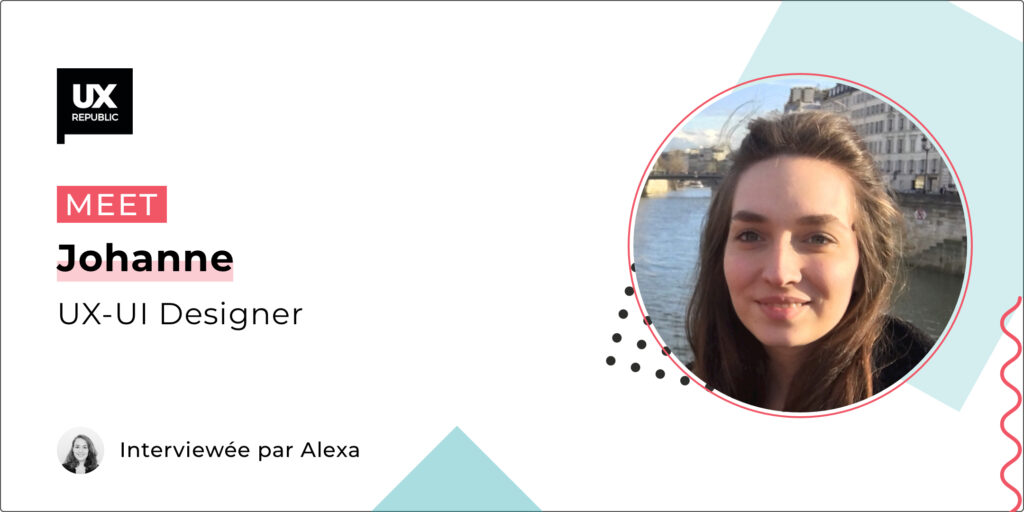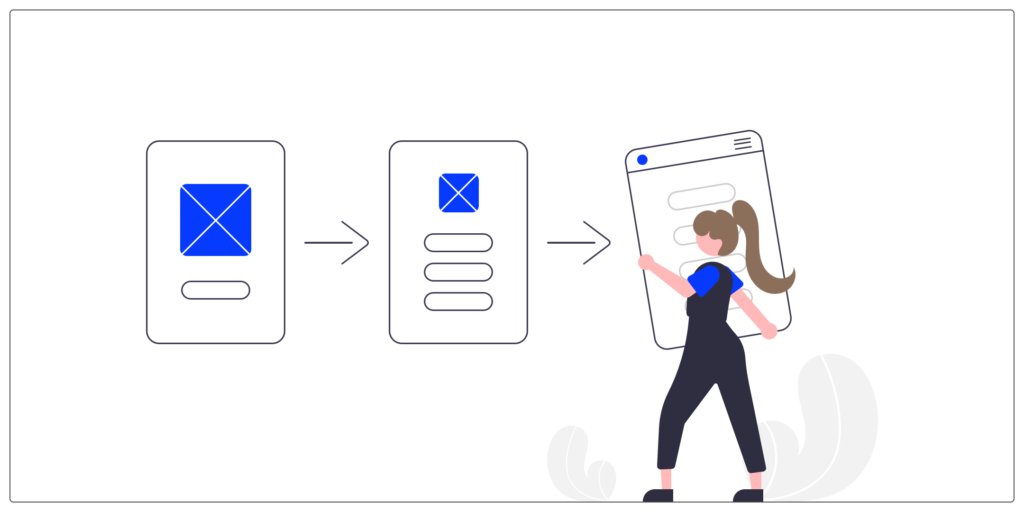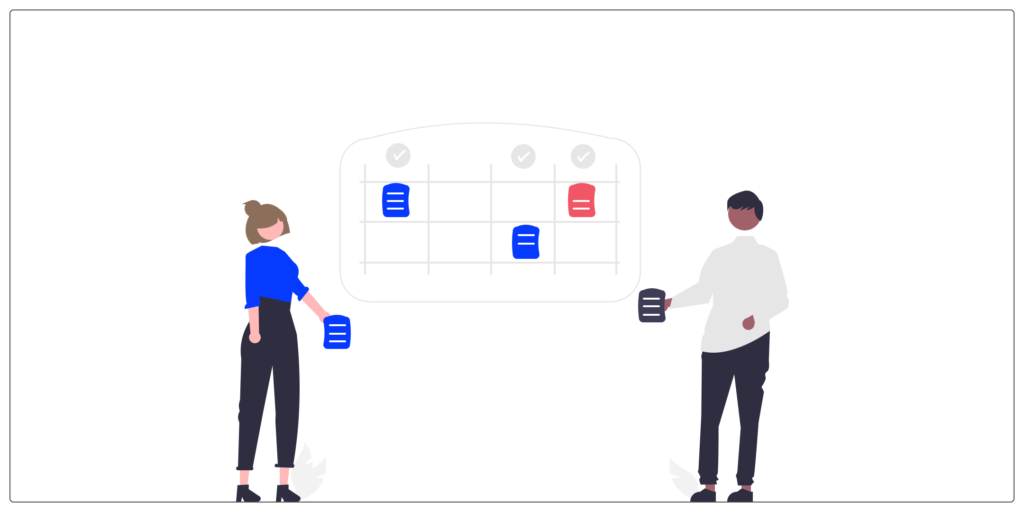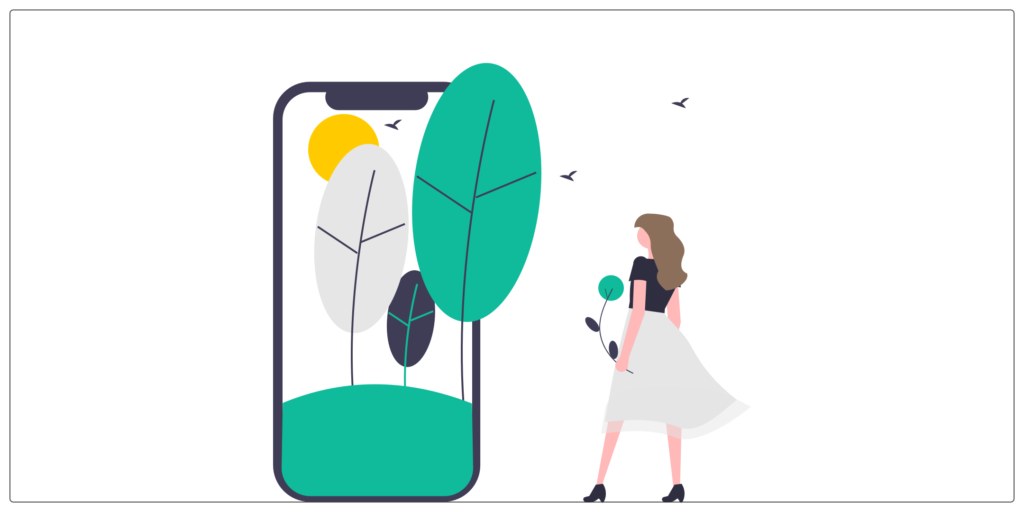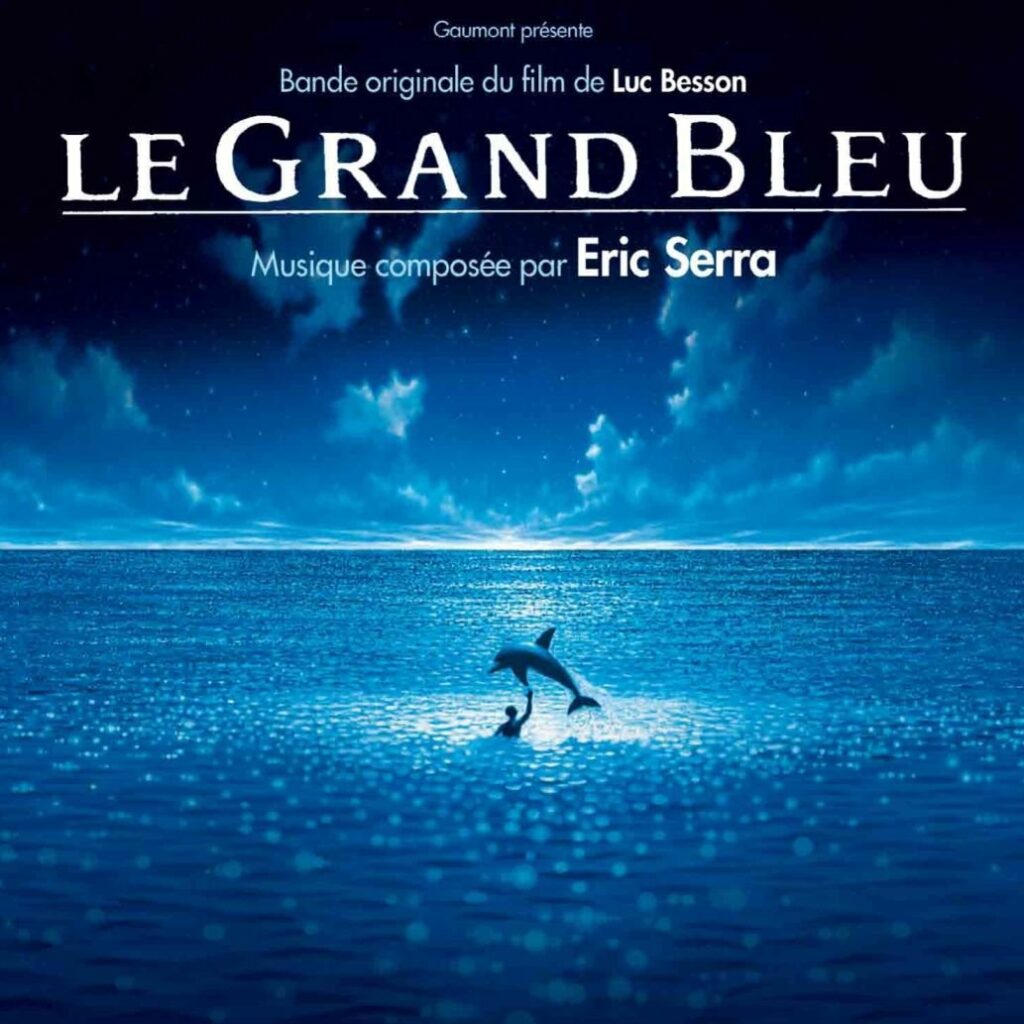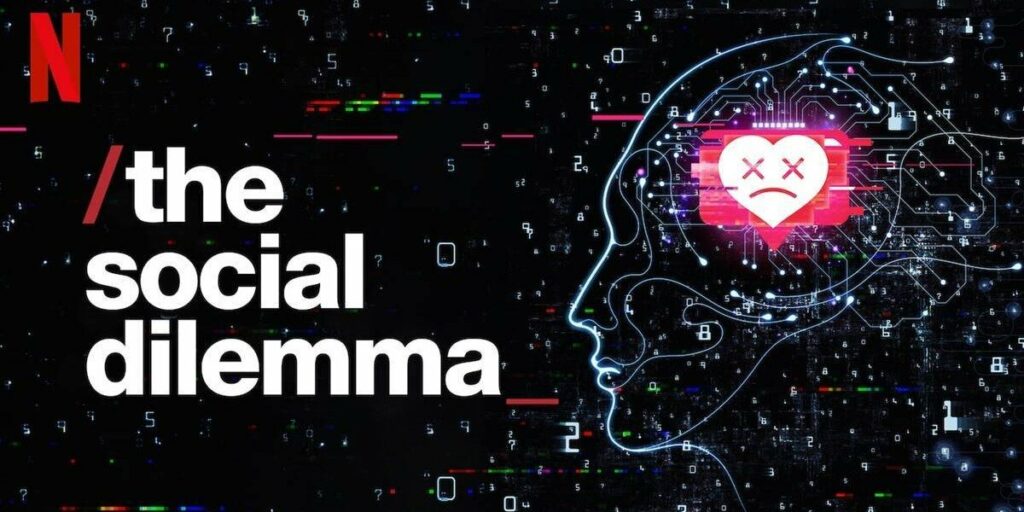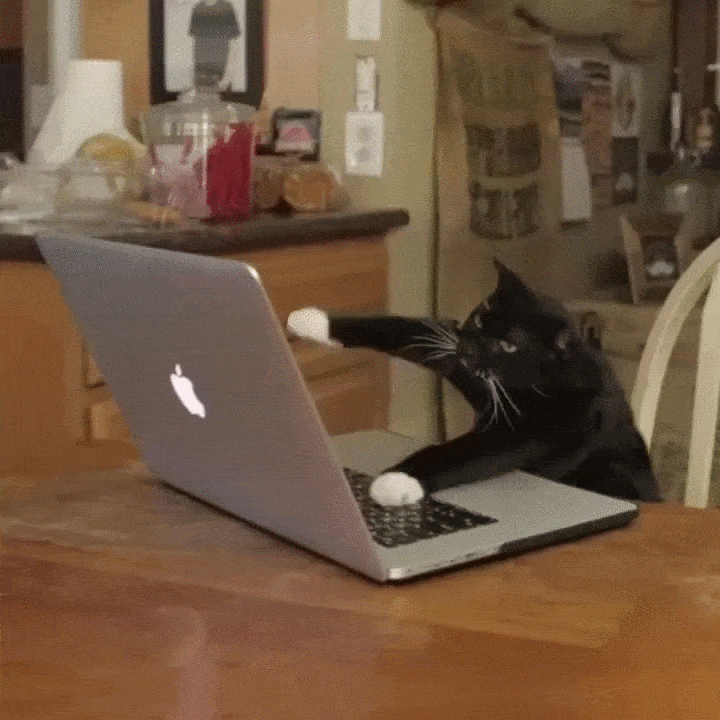I met Johanne during a mission where she has been a UX-UI Designer for two years.
Johanne is a curious, thoughtful and pragmatic young woman. It's very pleasant to talk to her because she is kind and open-minded.
We discuss everything! We regularly hear from each other to find out if everything is going well in our respective missions. We talk about music, film, podcast, series (and especially Friends, #teamMondler). She often shares Instagram accounts with me that she follows; humorous accounts, very quirky, on various subjects (on astrology, animals, news, UX, …).
And today, it was important to me to interview her to highlight her beautiful personality and that she can tell us about her experiences in the field.
Hello Johanne, can you present your background in a few words?
I've been a UX-UI Designer at UX Republic for just over two years. I have seven years of experience. Before UX Republic, I did a bit of everything! I worked in a communication agency, with an advertiser, for a design company, and then turned to the status of consultant. I like to work on a lot of different things. And so right now, I've been on a mission for 2 years with a client. This is my first assignment at UX Republic and it has been going on ever since.
Why did the role of consultant appeal to you more than your former positions?
You should know that one of my personality traits is that I get bored very quickly, so the status of consultant allows me to change client or organization very often. I'm still doing my job but each time I discover new areas and that's what I like.
Isn't that a bit paradoxical compared to your current mission which has already lasted two years?
Yes, completely paradoxical! But I keep learning. The mission evolves. So far, I'm not bored and I still have plenty to bring.
We're going to do a little background before going into detail about your mission. What was your educational background to become a UX-UI Designer?
After my baccalaureate, I entered a private communication school, Digital Campus in Paris (at the time called IESA Multimédia), to do a bachelor's degree in “digital publishing and communication”. It is a bachelor's degree which is done alternately for three years. And once my bachelor's degree was finished, I specialized in User Experience during my master's degree "Expert in Digital Strategy". I did all my studies on a work-study basis, which allowed me to see several areas and structures of different companies.
Where did you acquire the UI Designer cap? In the field during your work-study program or did you follow a training course?
During my bachelor's degree, I had a graphic design specialty so a little related to the UI, it was the old name we gave at the time. During my master's, the two were combined. Both UX and UI Design, although the name of the specialization only highlights UX design.
So, I'm intrigued because you quickly found your way to UX Design after the baccalaureate, you always wanted to do design?
I didn't choose to be a UX Designer actually! I discovered my school during a student fair where there were plenty of stands and the IESA accepted my intention because it was geared towards the management of multimedia projects. Ever since I was little, I've been very computer literate. I remember, I stole PC games from my brother to play on the sly. So, I knew I wanted to work in digital, but I didn't necessarily know the job at the time. It was once I joined the school, especially with the specialization in graphic design during my Bachelor's degree, that I was able to hone my skills as a graphic designer in a communication agency.
Can you tell us more about your first experiences in a communication agency?
In the end, it didn't really suit me. It was too subjective, too oriented towards tastes and colors. So it was very complicated to move forward. It was once I had to choose a new specialization at the start of the Master's that I discovered UX design. It spoke to me a lot, it echoed my background. I remember, in a communication agency, having worked with a client on twenty-seven versions of a single design! For in the end, lead to a version which approached the first version with two or three modifications. It drove me completely crazy!
Can we say that you found yourself more in touch with UX design because it is more factual and concrete?
Yes thats exactly it. UX is almost a scientific protocol with data, we can do tests, we work in much shorter iterations. It is based on reality and concrete. It's not just “make me a creation on ecology but I don't like green, good luck!”.
Today, if I ask you your preference between UX Design and UI design, would you rather choose UX Design?
All I like is the upstream research, the understanding of the business and the processes, challenging the paths, etc. Especially since I am specialized in the redesign of business IS (Business Information System), I have worked very little with BtoC. So yes, I like the whole UX part. The UI is an expertise that I also bring to my clients if necessary. But it's not my favorite area.
So you arrived at UX Republic at the end of 2019, what guided your choice?
I was in another consulting agency, I was at the end of a cycle and I had to move. That's when UX Republic contacted me. At the time, it was this position of UX leader in France that brought me to UX Republic. In any case, on the Parisian market, when we talk about UX, the reference was really UX Republic. So it's obviously easier to listen to their offers and join them. Then, what also helped me in my choice is everything around it: the organization of UX Days and training. Moments a little missed in recent years with the health crisis.
The transition is all found, how did you experience the period of the health crisis and telework in relation to your mission?
I really like telework but not 100% either. For certain tasks, we are much more efficient when we are all around a table talking to each other, drawing or diagramming our ideas. The hardest point for me was to cut at the end of my working day and move from professional life to personal life, without the “transport” airlock. At the end of the day, it's a lot harder to shut down and shut down the computer.
Is it still the case or have you managed to find a way to make this transition in your day?
Today, at my client's we have a teleworking rhythm of 2 days a week so it's much simpler. I try to reserve the days on site for meetings, and the days of teleworking for the big sessions of modeling, prototyping.
And compared to the animation of the workshops, you who appreciate the collaborative spirit where the participants can draw and schematize their ideas, I imagine that you also had to adapt to the organization of remote workshops.
Yes totally. In fact, everything takes longer, even for a simple question.
I have many questions about your mission. To begin, can you tell us about the project you are working on?
The project is the overhaul of one of the internal IS, which is reaching a certain technological obsolescence so they are in the process of making a technical evolution. And suddenly, they take the opportunity to rework the user paths, erase business irritants and improve the performance of their tool. My role as a UX-UI designer is to carry all these experience-related topics. And you should know that the tool is divided into lots of micro-applications and, originally, I came to redesign one of them, then the mission was extended.
You told me to work on several subjects at the same time, is one of these subjects more challenging than the others?
Working on the redesign of micro-applications is not the most complicated because we follow a charter, page templates and paths. The most challenging thing, and I've been working on it for a year and a half, is the aggregator portal for all these micro-applications. The single entry point for the user. The challenge was to rework all these paths that intersect (between the management of requests, the consultation sheets, etc.). Because this division of micro-applications is purely technical and must be completely transparent for him.
When I finalized my mission, we were both in the process of starting a project to build a Design System. Is this a successful project?
It's still ongoing! Since this summer, we have been working on the creation of a Design System project. In fact, despite the models, the implementation of “good practices” sheets and the page templates, there are always gaps between the developments of the different teams within the same project. So that poses a problem for the integration to the portal. The design system has this objective of standardizing all screens”.
I notice that you are alone on the mission to deal with a large number of subjects with lots of sub-projects. Can you tell me more about your relationship with the other actors in the project and your organization?
It's true that it's not always easy to be alone on such a project. But things are starting to fall into place within the structure. At the project level, we are organized in SAFE (this is the brick to be able to coordinate several agile teams at the same time). You should know that this is a big project. We are about 130 employees divided into 3 areas, each of which includes 5 teams. In each team, there is a PO, a QA, a team of developers. And then there are the Scrum Masters and the PMs.
How are you organized in the face of the demands of so many teams?
I rely a lot on the teams and especially on the POs who are real allies. Then, there is a whole framing team that dissects the work for me upstream (understanding of the processes, business irritants, etc.).
And what about the prioritization of topics?
For prioritization, it is the PMs and the trades that decide. There is a very big organization that is done during PI planning, one of the SAFE ceremonies, which consists of planning the next increment (one increment = 5 next sprints = the next 3 months). During this ceremony, which lasts two days, I meet the teams in each area to list all their needs per sprint.
A backlog of models and subjects to be treated is created and then, depending on the needs and complexity, the priority is validated with the POs and/or PMs.
What do you appreciate the most in your mission?
I like that it takes me out of my comfort zone. I prefer a challenging mission where there are a lot of things to do. What interests me when I'm on a mission with a client is being able to set up a whole process and see the consequences of my actions. And so suddenly, it's true that I have a preference for long missions.
What are the prospects for your mission for the year 2022?
2022 which is coming is the culmination of my work because we are opening the portal little by little during the year.
If we go a bit into the future, with a view to a new mission, for which sector of activity would you like to design interfaces?
I never really thought about it but maybe on the theme of ecology. Government interfaces for approaches to ecology, that could be interesting.
If I listen to my sensitive little heart, I'll tell you a project related to animals. I have a former colleague who told me about one of her projects where she led user tests for a kibble manufacturer! The tests took place with several dogs and several ranges to be tested. It must have been very fun.
So, would you be interested in working and applying a UX methodology to a product rather than to interfaces?
Yeah, that's something I've never done. And that could be interesting. The processes and methodologies are somewhat the same. It opens up new perspectives.
Are you interested in the User Research part?
Yes, it is very interesting. In my previous experience, I had done a mission in pairs at the Ministry of the Interior with a whole exploratory research part. We went to the field and organized immersions and Shadowing. The elements identified during these meetings had helped us throughout the project! But it is generally time that clients do not grant at the start of the mission. I find it difficult to convince a client that UX Research is important and will pay off afterwards.
With your current client, have you had the opportunity to show the added value of this long-term investment of UX Research for the project?
It was part of one of the tasks to be done at the very beginning of the subject of the portal. We had put in place a whole process that we had subsequently presented to the profession, in particular with immersions. But it was in February 2020. A few weeks later, we were confined so the immersions could not be done.
On the project, is it planned to set up user test sessions to get feedback and be able to refine what you have produced?
For now, we have set up “sandboxes”. These are test environments for people in the business to give feedback on different scenarios. But suddenly, it's not supervised like real user testing sessions. There are forty thousand active users and eight thousand daily users on average, so it is a central tool in the business. As a result, it is essential to have a platform that works well and to test upstream.
Let's talk a bit about the trainings you were able to follow at UX Republic. Which ones have you participated in? And above all, were you able to apply what you learned on a mission?
I have followed three training courses since my arrival:
The fundamentals of UX: not necessarily the one that brought me the most because there was a lot of redundancy with my studies and my background. I wasn't necessarily the target.
Training on Lean UX: very interesting, I discovered this methodology. The opportunity has not yet presented itself but I am curious to apply it on a mission.
The mapping experience: it resonates a lot with my UX-oriented preferences. Each module of the training introduces us to a new cartography, some of which I applied during my mission.
Johanne, we have almost finished our little exchange, before leaving us I would like to ask you a few quick questions:
UX Design, UI Design or User Research?
UX Design!
Sketch, Figma or Adobe XD?
All three suit me. All three have advantages. Figma is superior for working collaboratively, as a team. On Adobe XD, I like the prototyping part. I adapt according to the mission. Once I integrate a mission, I get up to speed on the designated tool and I adapt easily.
Guidelines iOS or Android?
In my personal use, I'm more iOS. Afterwards, I am not specialized in mobile design and therefore I have no knowledge of the specific constraints of each OS on mobile.
Music or no music when you work?
Oh bah music! All the time, even when I'm not working! To work, I need music without words to create a bubble of concentration, so at the moment I listen to a lot of film soundtracks.
This year, in my Deezer listening top, Eric Serra is in the top 2 of my favorite artists with the soundtrack album of the movie Le Grand Bleu.
It makes me think… When we were working together, you made me discover the mantras that I often listen to when I work.
Yes it is also part of my listening. You can also write it, I often listen to it when I work!
A book, a film or a documentary on digital that marked you and that you would recommend?
The Social Dilemma on Netflix. I even recommended it to my parents so that they understand the phenomenon around social networks and especially how they work! We understand through the explanations that it's not just scrolling on images, but that behind it are entire teams and artificial intelligences working to always show you what you want to see so that you stay connected as long as possible. possible.
Precisely, seeing designers who say “I invented the 'like' button and I'm sorry”, does that resonate with you? In your professional conscience?
Obviously, you need a certain form of ethics when you are a UX Designer. Being specialized in business applications, I am less confronted with it than for B2C. But the day it does, it will be part of my thoughts. In the documentary, the designers who invented all our automatisms (the “like” button, the infinite scroll, etc.) say that they regret it. And it is true that with these returns I ask myself questions.
A designer you follow on social media?
I don't have a designer name that comes to mind. On the other hand, there is an Instagram account that makes me die of laughter and that makes me continue to believe in my job. It's bad bad UX. They post photos and videos of user experiences that don't work well. For example, they posted a video where we see a hydroalcoholic gel dispenser that has been fixed on the door of a supermarket but in fact it is a sliding door. So we see someone putting their hand under the dispenser but the door activates and the bottle slips to the side and the dose of hydroalcoholic gel ends up on the floor! Each post is very funny and I tell myself that many experiences still need to be improved! It reinforces my sense of my profession.
I remember you shared a lot of funny accounts like that on Instagram. Is this your way of monitoring, with quirky content like badbad_UX posts?
In addition to a more classic monitoring too, but yes I like offbeat content. But I still have a time limit on Instagram! I don't want to be one of the puppets described in the documentary The Social Dilemma.
What do you think of this feature of Instagram to be able to restrict the time of use?
With the publication of studies on the psychological state of American adolescents in the face of social networks, they were surely obliged to do this. Or rather strongly encouraged, it gave them bad publicity so they had to come up with a solution. There's also been this whole change around the “Like” counters, which have been hidden. I think these are good things.
Yes, and now it's the user who can choose in his settings if he wants to hide or show the counter.
Joan, we're done! Thank you again for our discussion! Do you want to add something that we haven't covered?
(Her little cat climbs on the desk)
She would also like to be interviewed, she apparently has things to say! Don't you want the final word to be a gif of a cat typing on a keyboard?
Image sources: https://undraw.co/illustrations https://giphy.com/
Alexa Cuellar, UX Designer @UX-Republic
Our next trainings
UX/UI ECO-DESIGN # Paris
SMILE Paris
163 quay of Doctor Dervaux 92600 Asnières-sur-Seine
DESIGN THINKING: CREATING INNOVATION # Belgium
UX-REPUBLIC Belgium
12 avenue de Broqueville - 1150 Woluwe-Saint-Pierre
MANAGING AND MEASURING UX # Paris
SMILE Paris
163 quay of Doctor Dervaux 92600 Asnières-sur-Seine
DESIGN SPRINT: INITIATION & FACILITATION # Paris
SMILE Paris
163 quay of Doctor Dervaux 92600 Asnières-sur-Seine
UX-DESIGN: THE FUNDAMENTALS # Belgium
UX-REPUBLIC Belgium
12 avenue de Broqueville - 1150 Woluwe-Saint-Pierre
GOOGLE ANALYTICS 4 #Paris
SMILE Paris
163 quay of Doctor Dervaux 92600 Asnières-sur-Seine
ACCESSIBLE UX/UI DESIGN # Belgium
UX-REPUBLIC Belgium
12 avenue de Broqueville - 1150 Woluwe-Saint-Pierre
EXPERIENCE MAPPING # Paris
SMILE Paris
163 quay of Doctor Dervaux 92600 Asnières-sur-Seine
